By. Henry Giroux
calling to speak is often a vocation of agony, but we must speak. We must speak with all the humility that is appropriate to our limited vision, but we must speak.
Martin Luther King, Jr.
If the right-wing billionaires and apostles of corporate power have their way, public schools will become “dead zones of the imagination,” reduced to anti-public spaces that wage an assault on critical thinking, civic literacy and historical memory.1 Since the 1980s, schools have increasingly become testing hubs that de-skill teachers and disempower students. They have also been refigured as punishment centers where low-income and poor minority youth are harshly disciplined under zero tolerance policies in ways that often result in their being arrested and charged with crimes that, on the surface, are as trivial as the punishment is harsh. 2 Under casino capitalism’s push to privatize education, public schools have been closed in cities such as, Philadelphia, Chicago and New York to make way for charter schools. Teacher unions have been attacked, public employees denigrated and teachers reduced to technicians working under deplorable and mind-numbing conditions. 3
Corporate school reform is not simply obsessed with measurements that degrade any viable understanding of the connection between schooling and educating critically engaged citizens. The reform movement is also determined to underfund and disinvest resources for public schooling so that public education can be completely divorced from any democratic notion of governance, teaching and learning. In the eyes of billionaire un-reformers and titans of finance such as Bill Gates, Rupert Murdoch, the Walton family and Michael Bloomberg, public schools should be transformed, when not privatized, into adjuncts of shopping centers and prisons. 4
Like the dead space of the American mall, the school systems promoted by the un-reformers offer the empty ideological seduction of consumerism as the ultimate form of citizenship and learning. And, adopting the harsh warehousing mentality of prison wardens, the un-reformers endorse and create schools for poor students that punish rather than educate in order to channel disposable populations into the criminal justice system where they can fuel the profits of private prison corporations. The militarization of public schools that Secretary Arnie Duncan so admired and supported while he was the CEO of the Chicago School System was not only a ploy to instill authoritarian discipline practices against students disparagingly labeled as unruly, if not disposable. It was also an attempt to design schools that would break the capacity of students to think critically and render them willing and potential recruits to serve in senseless and deadly wars waged by the American empire. And, if such recruitment efforts failed, then students were quickly put on the conveyor belt of the school-to-prison pipeline. For many poor minority youth in the public schools, prison becomes part of their destiny, just as public schools reinforce their status as second-class citizens. As Michelle Alexander points out, “Instead of schools being a pipeline to opportunity, [they] are feeding our prisons.” 5
Market-driven educational reforms, with their obsession with standardization, high-stakes testing, and punitive policies, also mimic a culture of cruelty that neoliberal policies produce in the wider society. They exhibit contempt for teachers and distrust of parents, repress creative teaching, destroy challenging and imaginative programs of study and treat students as mere inputs on an assembly line. Trust, imagination, creativity, and a respect for critical teaching and learning are thrown to the wind in the pursuit of profits and the proliferation of rigid, death-dealing accountability schemes. As John Tierney points out in his critique of corporate education reforms in The Atlantic, such approaches are not only oppressive – they are destined to fail. He writes:
Policies and practices that are based on distrust of teachers and disrespect for them will fail. Why? ‘The fate of the reforms ultimately depends on those who are the object of distrust.’ In other words, educational reforms need teachers’ buy-in, trust, and cooperation to succeed; ‘reforms’ that kick teachers in the teeth are never going to succeed. Moreover, education policies crafted without teacher involvement are bound to be wrongheaded. 6
The situation is further worsened in that not only are public schools being defunded and public school teachers attacked as the new welfare queens, but social and economic policies are being enacted by Republicans and other right-wingers to ensure low-income and poor minority students fail in public schools. For instance, many Tea Party-elected governors in states such as Wisconsin, North Carolina and Maine, along with right-wing politicians in Congress, are enacting cruel and savage policies (such as the defunding of the food stamp program) that directly impact on the health and well-being of poor students in schools. 7 Such policies shrink, if not destroy, the educational opportunities of poor youth by denying them the basic provisions they need to learn and then utilizing the consequent negative educational outcomes as one more illegitimate rationale for turning public schools over to private interests.
To read more articles by Henry A. Giroux and other authors in the Public Intellectual Project, click here.
When billionaire club members, such as Bill Gates and right-wing donors such as Art Pope, are not directly implementing policies that defund schools, they are funding research projects that turn students into test subjects for a world that even George Orwell would have found hard to imagine. 8 For instance, the Bill and Melinda Gates Foundation has provided a $500,000 grant to Clemson University to do a pilot study in which students would wear galvanic skin bracelets with wireless sensors that would track their physiological responses to various stimuli in the schools. A spokesperson for the foundation argues in defense of this creepy obsession with measuring students’ emotional responses by claiming that the biometric devices are a help to teachers who can measure “‘real-time’ (reflective feedback), kind of like a pedometer.” 9
It is not the vagueness of what this type of research is trying to achieve that is the most ludicrous and ethically offensive part of this study: It is the notion that reflective feedback can be reduced to measuring emotional impulses rather than produced through engaged dialogue and communication between actual teachers and students. How can bracelets measure why students are acting out if they are hungry, bored, fearful, sick or lack sleep because their parents might be homeless? How do such studies address larger structural issues such as the 50 million people in the United States who go hungry every night, one-third of whom are children? And how do they manage to ignore their own connection to the rise of the surveillance state and the ongoing destruction of the civil rights of children and others? Research of this kind cannot speak to the rise of a Jim Crow society in which the mass incarceration of poor minorities is having a horrible effect on children. As Michelle Alexander points out, these are children “who have a parent or loved one, a relative, who has either spent time behind bars or who has acquired a criminal record and thus is part of the under-caste – the group of people who can be legally discriminated against for the rest of their lives.” 10 And the effect of such daily struggle is deadly. She writes:
. . . For these children, their life chances are greatly diminished. They are more likely to be raised in severe poverty; their parents are unlikely to be able to find work or housing and are often ineligible even for food stamps. For children, the era of mass incarceration has meant a tremendous amount of family separation, broken homes, poverty, and a far, far greater level of hopelessness as they see so many of their loved ones cycling in and out of prison. Children who have incarcerated parents are far more likely themselves to be incarcerated. 11
In contrast to the socially and ethically numb forms of educational research endorsed by so-called reformers, a recent study has linked high-stakes testing to lower graduation rates and higher incarceration rates, indicating that such testing plays a significant role in expanding “the machinery of the school-to-prison pipeline,” especially for low-income students and students of color.12 Most critics of the billionaires’ club ignore these issues. But a number of critics, such as New York University education professor Diane Ravitch, have raised significant questions about this type of research. Ravitch argues that Gates should “devote more time to improving the substance of what is being taught . . . and give up on all this measurement mania.” 13 Such critiques are important, but they could go further. Such reform efforts are about more than collapsing teaching and learning into an instrumental reductionism that approximates training rather than education. As Ken Saltman points out, the new un-reformers are political counter-revolutionaries and not simply misguided educators. 14
Noam Chomsky gets it right in arguing that we are now in a general period of regression that extends far beyond impacting education alone. 15 This period of regression is marked by massive inequalities in wealth, income and power that are fueling a poverty and ecological crisis and undermining every basic public sphere central to both democracy and the culture and structures necessary for people to lead a life of dignity and political participation. 16 The burden of cruelty, repression and corruption has broken the back of democracy, however weak, in the United States. America is no longer a democracy, nor is it simply a plutocracy. It has become an authoritarian state steeped in violence and run by the commanding financial, cultural and political agents of corporate power. 17
Corporate sovereignty has replaced political sovereignty, and the state has become largely an adjunct of banking institutions and financial service industries. Addicted to “the political demobilization of the citizenry,” the corporate elite is waging a political backlash against all institutions that serve democracy and foster a culture of questioning, dialogue and dissent. 18 The apostles of neoliberalism are concerned primarily with turning public schools over to casino capitalism in order to transform them into places where all but the privileged children of the 1% can be disciplined and cleansed of any critical impulses. Instead of learning to become independent thinkers, they acquire the debilitating habits of what might be called a moral and political deficit disorder that renders them passive and obedient in the face of a society based on massive inequalities in power, wealth and income. The current powerful corporate-based un-reform movement is wedded to developing modes of governance, ideologies and pedagogies dedicated to constraining and stunting any possibility for developing among students those critical, creative, and collaborative forms of thought and action necessary for participating in a substantive democracy.
At the core of the new reforms is a commitment to a pedagogy of stupidity and repression that is geared toward memorization, conformity, passivity, and high stakes testing. Rather than create autonomous, critical, and civically engaged students, the un-reformers kill the imagination while depoliticizing all vestiges of teaching and learning. The only language they know is the discourse of profit and the disciplinary language of command. John Taylor Gatto points to some elements of this pedagogy of repression in his claim that schools teach confusion by ignoring historical and relational contexts. 19 Every topic is taught in isolation and communicated by way of sterile pieces of information that have no shared meanings or context.
A pedagogy of repression defines students largely by their shortcomings rather than by their strengths, and in doing so convinces them that the only people who know anything are the experts – increasingly drawn from the ranks of the elite and current business leaders who embody the new models of leadership under the current regime of neoliberalism. Great historical leaders who exhibited heightened social consciousness such as Martin Luther King Jr., Rosa Parks, Nelson Mandela, John Dewey, Paulo Freire and Mahatma Ghandi are relegated to the dustbin of history. Students are taught only to care about themselves and to view any consideration for others as a liability, if not a pathology. Ethical concerns under these circumstances are represented as hindrances to be overcome. Narcissism along with an unchecked notion of individualism is the new normal.
Under a pedagogy of repression, students are conditioned to unlearn any respect for democracy, justice, and what it might mean to connect learning to social change. They are told that they have no rights and that rights are limited only to those who have power. This is a pedagogy that kills the spirit, promotes conformity, and is more suited to an authoritarian society than a democracy. What is alarming about the new education un-reformers is not only how their policies have failed, but the degree to which such policies are now embraced by liberals and conservatives in both the Democratic and Republican Parties despite their evident failure. 20 The Broader, Bolder Approach to Education study provides a list of such failures that are instructive. The outcomes of un-reform measures noted in the study include:
Test scores increased less, and achievement gaps grew more, in “reform” cities than in other urban districts. Reported successes for targeted students evaporated upon closer examination. Test-based accountability prompted churn that thinned the ranks of experienced teachers, but not necessarily bad teachers. School closures did not send students to better schools or save school districts money. Charter schools further disrupted the districts while providing mixed benefits, particularly for the highest-needs students. Emphasis on the widely touted market-oriented reforms drew attention and resources from initiatives with greater promise. The reforms missed a critical factor driving achievement gaps: the influence of poverty on academic performance. Real, sustained change requires strategies that are more realistic, patient and multipronged. 21
The slavish enthusiasm of the cheerleaders for market-driven educational policies becomes particularly untenable morally and politically in light of the increasing number of scandals that have erupted around inflated test scores and other forms of cheating committed by advocates of high stakes testing and charter schools. 22 David Kirp offers an important commentary on the seriousness and scope of the scandals and the recent setbacks of market-oriented educational reform. He writes:
In the latest Los Angeles school board election, a candidate who dared to question the overreliance on test results in evaluating teachers and the unseemly rush to approve charter schools won despite $4 million amassed to defeat him, including $1 million from New York City Mayor Michael Bloomberg and $250,000 from Rupert Murdoch’s News Corp. Former Atlanta superintendent Beverly Hall, feted for boosting her students’ test scores at all costs, has been indicted in a massive cheating scandal. Michelle Rhee, the former Washington D.C. school chief who is the darling of the accountability crowd, faces accusations, based on a memo released by veteran PBS correspondent John Merrow, that she knew about, and did nothing to stop, widespread cheating. In a Washington Post op-ed, Bill Gates, who has spent hundreds of millions of dollars promoting high-stakes, test-driven teacher evaluation, did an about-face and urged a kinder, gentler approach that teachers could embrace. And parents in New York State staged a rebellion, telling their kids not to take a new and untested achievement exam. 23
While pedagogies of repression come in different forms and address different audiences in various contexts, they all share a commitment to defining pedagogy as a set of strategies and skills to use in order to teach prescribed subject matter. In this context, pedagogy becomes synonymous with teaching as a technique or the practice of a craft-like skill. There is no talk here of connecting pedagogy with the social and political task of resistance, empowerment or democratization. Nor is there any attempt to show how knowledge, values, desire and social relations are always implicated in power. Any viable notion of critical pedagogy must reject such definitions of teaching and their proliferating imitations even when they are claimed as part of a radical discourse or project. In opposition to the instrumentalized reduction of pedagogy to a mere method that has no language for relating the self to public life, social responsibility or the demands of citizenship, critical pedagogy works to illuminate the relationships among knowledge, authority and power. 24 For instance, it raises questions regarding who has control over the conditions for producing knowledge such as the curricula being promoted by teachers, textbook companies, corporate interests or other forces?
Central to any viable notion of what makes a pedagogy critical is, in part, the recognition that pedagogy is always a deliberate attempt on the part of educators to influence how and what forms of knowledge and subjectivities are produced within particular sets of social relations. In this case, critical pedagogy draws attention to the ways in which knowledge, power, desire, and experience are produced under specific conditions of learning, and in doing so rejects the notion that teaching is just a method or is removed from matters of values, norms, and power – or, for that matter, the struggle over agency itself and the future it suggests for young people. Rather than asserting its own influence in order to wield authority over passive subjects, critical pedagogy is situated within a project that views education as central to creating students who are socially responsible and civically engaged citizens. This kind of pedagogy reinforces the notion that public schools are democratic public spheres, education is the foundation for any working democracy and teachers are the most responsible agents for fostering that education.
This approach to critical pedagogy does not reduce educational practice to the mastery of methodologies. It stresses, instead, the importance of understanding what actually happens in classrooms and other educational settings by raising questions such as: What is the relationship between learning and social change? What knowledge is of most worth? What does it mean to know something? And in what direction should one desire? Yet the principles and goals of critical pedagogy encompass more. Pedagogy is simultaneously about the knowledge and practices teachers and students might engage in together and the values, social relations and visions legitimated by such knowledge and practices. Such a pedagogy listens to students, gives them a voice and role in their own learning, and recognizes that teachers not only educate students but also learn from them.
In addition, pedagogy is conceived as a moral and political practice that is always implicated in power relations because it offers particular versions and visions of civic life, community, the future, and how we might construct representations of ourselves, others, and our physical and social environment. Pedagogy provides a discourse for agency, values, social relations, and a sense of the future. It legitimates particular ways of knowing, being in the world, and relating to others. As Roger Simon observed, it also “represents a version of our own dreams for ourselves, our children, and our communities. But such dreams are never neutral; they are always someone’s dreams and to the degree that they are implicated in organizing the future for others they always have a moral and political dimension.” 25 It is in this respect that any discussion of pedagogy must begin with a discussion of educational practice as a particular way in which a sense of identity, place, worth, and above all, value is informed by practices that organize knowledge and meaning.
Central to my argument is the assumption that politics is not only about power, but also, “has to do with political judgements and value choices,” 26 indicating that questions of civic education and critical pedagogy (learning how to become a skilled citizen) are central to the struggle over political agency and democracy. Critical pedagogy rejects the notion of students as passive containers who simply imbibe dead knowledge. Instead, it embraces forms of teaching that offer students the challenge to transform knowledge rather than simply “processing received knowledges.” 27 Under such circumstances, critical pedagogy becomes directive and intervenes on the side of producing a substantive democratic society. This is what makes critical pedagogy different from training. And it is precisely the failure to connect learning to its democratic functions and goals that provides rationales for pedagogical approaches that strip what it means to be educated from its critical and democratic possibilities. 28
Critical pedagogy becomes dangerous in the current historical moment because it emphasizes critical reflection, bridging the gap between learning and everyday life, understanding the connection between power and difficult knowledge, and extending democratic rights and identities by using the resources of history. Rather than viewing teaching as technical practice, pedagogy in the broadest critical sense is premised on the assumption that learning is not about memorizing dead knowledge and skills associated with learning for the test but engaging in a more expansive struggle for individual rights and social justice. The fundamental challenge facing educators within the current age of neoliberalism, militarism, and religious fundamentalism is to provide the conditions for students to address how knowledge is related to the power of both self-definition and social agency. In part, this suggests providing students with the skills, ideas, values and authority necessary for them to nourish a substantive democracy, recognize antidemocratic forms of power and fight deeply rooted injustices in a society and world founded on systemic economic, racial and gendered inequalities.
Any viable notion of critical pedagogy must be understood as central to politics itself and rather than disconnect public education from larger social, economic and political issues, it must connect them to such forces as part of a wider crisis of both education and democracy. At the very least, education must be viewed as part of an emancipatory project that rejects the privatization and corporatization of public schools and the tax and finance forces that support iniquitous schools systems. For pedagogy to matter, it must support a culture and the relations of power that provide teachers with a sense of autonomy and control over the conditions of their labor. Teachers must be viewed as public intellectuals and a valuable social resource, and the conditions of their labor and autonomy must be protected. In this instance, the fight to preserve labor unions must be viewed as central to preserving the rights and working conditions necessary for public school teachers to teach with dignity under conditions that respect rather than degrade them.
Critical pedagogy must reject teaching being subordinated to the dictates of standardization, measurement mania and high stakes testing. The latter are part of a pedagogy of repression and conformity and have nothing to do with an education for empowerment. Central to the call for a critical pedagogy and the formative and institutional culture that makes it possible is the need to reconfigure government spending and to call for less spending on death and war and more on funding for education and the social programs that make it possible as a foundation for a democratic society. Schools are about more than measurable utility, the logic of instrumentality, abject testing, and mind-numbing training. In fact, the latter have little to do with critical education and pedagogy and must be rejected as part of an austerity and neoliberal project that is deeply anti-intellectual, authoritarian, and antidemocratic.
As a moral and political project, pedagogy is crucial for creating the agents necessary to live in, govern and struggle for a radical democracy. Moreover, it is important to recognize how education and pedagogy are connected to and implicated in the production not only of specific agents, a particular view of the present and future, but also how knowledge, values and desires, and social relations are always implicated in power. Power and ideology permeate all aspects of education and become a valuable resource when critically engaged around issues that problematize the relationship between authority and freedom, ethics and knowledge, language and experience, reading texts differently, and exploring the dynamics of cultural power. Critical pedagogy address power as a relationship in which conditions are produced that allow students to engage in a culture of questioning, to raise and address urgent, disturbing questions about the society in which they live, and to define in part the questions that can be asked and the disciplinary borders that can be crossed.
Education as a democratic project is utopian in its goal of expanding and deepening the ideological and material conditions that make a democracy possible. Teachers need to be able to work together, collaborate, work with the community, and engage in research that informs their teaching. In this instance, critical pedagogy refuses the atomizing structure of teaching that informs traditional and market-driven notions of pedagogy. Moreover, critical pedagogy should provide students with the knowledge, modes of literacy, skills, critique, social responsibility, and civic courage needed to enable them to be engaged critical citizens willing to fight for a sustainable and just society.
Critical pedagogy is a crucial antidote to the neoliberal attack on public education, but it must be accompanied and informed by radical political and social movements willing to make educational reform central to democratic change. 29 The struggle over public education is inextricably connected to a struggle against poverty, racism, violence, war, bloated defense budgets, a permanent warfare state, state sanctioned assassinations, torture, inequality, and a range of other injustices that reveal a shocking glimpse of what America has become and why it can no longer recognize itself through the moral and political visions and promises of a substantive democracy. And such a struggle demands both a change in consciousness and the building of social movements that are broad-based and global in their reach.
The struggle to reclaim public education as a democratic public sphere needs to challenge the regressive pedagogies, gated communities, and cultural and political war zones that now characterize much of contemporary America. These sites of terminal exclusion demand more than making visible and interrogating critically the spectacle of cruelty and violence used to energize the decadent cultural apparatuses of casino capitalism. They demand an encounter with new forms of pedagogy, modes of moral witnessing, and collective action, and they demand new modes of social responsibility. As Martin Luther King, Jr. insisted, “We are called to speak for the weak, for the voiceless, for victims of our nation and for those it calls enemy, for no document from human hands can make these humans any less our brothers.” 30 We can update King’s speech to encompass the weak, voiceless, and victims of our nation who are now represented by the low-income and poor minority youth who inhabit both the public schools and increasingly the prisons. These are the throwaway youth of an authoritarian America; they are the excess who painfully remind the elite of the need for social provisions, the viability of the public good, and those principles of economic life in need of substantial rethinking.
Under neoliberalism, it has become more difficult to respond to the demands of the social contract, public good, and the social state, which have been pushed to the margins of society – viewed as both an encumbrance and a pathology. And yet such a difficulty must be overcome in the drive to reform public education. The struggle over public education is the most important struggle of the 21st century because it is one of the few public spheres left where questions can be asked, pedagogies developed, modes of agency constructed and desires mobilized, in which formative cultures can be developed that nourish critical thinking, dissent, civic literacy and social movements capable of struggling against those antidemocratic forces that are ushering in dark, savage and dire times. We are seeing glimpses of such a struggle in Chicago and other states as well as across the globe and we can only hope that such movements offer up not merely a new understanding of the relationship among pedagogy, politics, and democracy, but also one that infuses both the imagination and hope for a better world.
[1] I have taken this term from David Graeber, “Dead Zones of the Imagination,” HAU: Journal of Ethnographic Theory 2 (2012): 105-128.
[2] I address this issue in great detail in Henry A. Giroux, Youth in a Suspect Society: Democracy or Disposability (New York: Palgrave, 2010).
[4] For an excellent critique of this type of corporate educational un-reform, see Kenneth J. Saltman, The Failure of Corporate School Reform (Boulder: Paradigm Publishers, 2013).
[14] Kenneth Saltman, The Gift of Education: Public Education and Venture Philosophy (New York: Palgrave Macmillan, 2012).
[18] Sheldon S. Wolin, Democracy Incorporated: Managed Democracy and the Specter of Inverted Totalitarianism (Princeton University Press, 2008), p. ix.
[19] John Gatto, Dumbing Us Down: The Hidden Curriculum of Compulsory Schooling, second revised edition (Gabriola Island, Canada: New Society Publishers, 2002).
[20] On the predatory nature of such reforms, see Henry A. Giroux, Education and the Crisis of Public Values (New York: Peter Lang, 2012); and Michael Gecan, “How Predatory Reformers Are Destroying Education and Profiting at Our Children’s Expense,” AlterNet (June 14, 2013), online: http://www.alternet.org/education/how-predatory-reformers-are-destroying-education-and-profiting-our-childrens-expense. On the failure of such reforms, see the work of Kenneth Saltman, Diane Ravitch, Henry A. Giroux, Jonathan Kozol, Shirley Steinberg, bell hooks, and others.
[21] Elaine Weiss and Don Long, Market-oriented education reforms’ rhetoric trumps reality: The impacts of test-based teacher revaluations, school closures, and increased charter school access on student outcomes in Chicago, New York City, and Washington, D.C. (Washington, DC: Broader, Bolder Approach to Education (April 22, 2013). Online: http://www.epi.org/files/2013/bba-rhetoric-trumps-reality.pdf
[24] For examples of this tradition, see Maria Nikolakaki (ed.), Critical Pedagogy in the Dark Ages: Challenges and Possibilities (New York: Peter Lang, 2012); and Henry A. Giroux, On Critical Pedagogy (New York: Continuum, 2011).
[25] Roger Simon, “Empowerment as a Pedagogy of Possibility,” Language Arts 64:4 (April 1987), p. 372.
[26] Cornelius Castoriadis, “Institutions and Autonomy.” In Peter Osborne (ed.), A Critical Sense (New York: Routledge, 1996), p. 8.
[27] Chandra Mohanty, “On Race and Voice: Challenges for Liberal Education in the 1990s,” Cultural Critique (Winter 1989-1990), p. 192.
[28] Amy Gutman, Democratic Education (Princeton: Princeton University Press, 1999).
[30] Martin Luther King, Jr., “Beyond Vietnam: A Time to Break Silence.” Information Clearing House. Speech delivered on April 4, 1967 at a meeting of Clergy and Laity Concerned at Riverside Church in New York City. Online: http://www.informationclearinghouse.info/article2564.htm

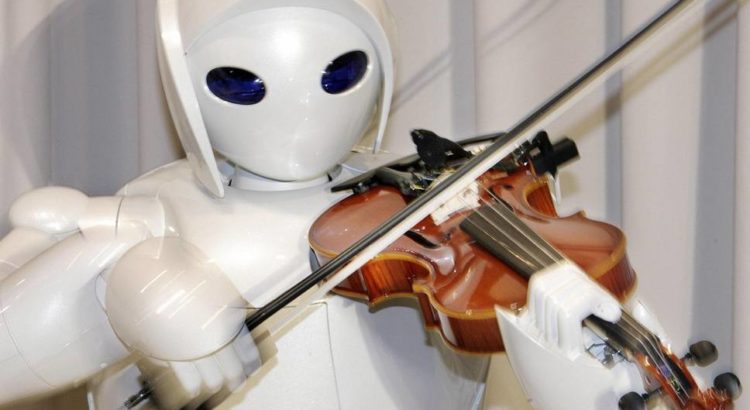

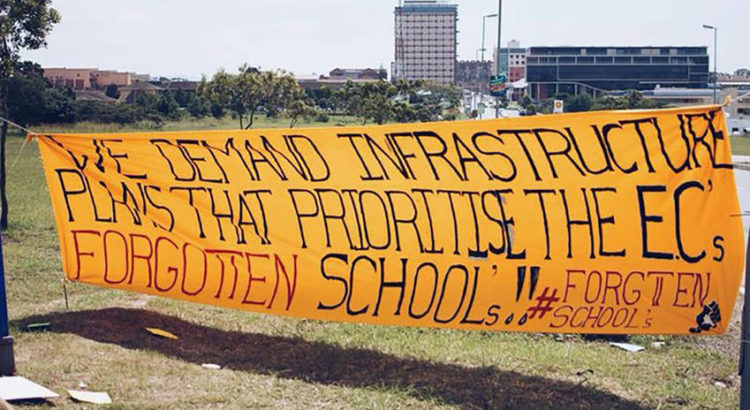
.jpg)
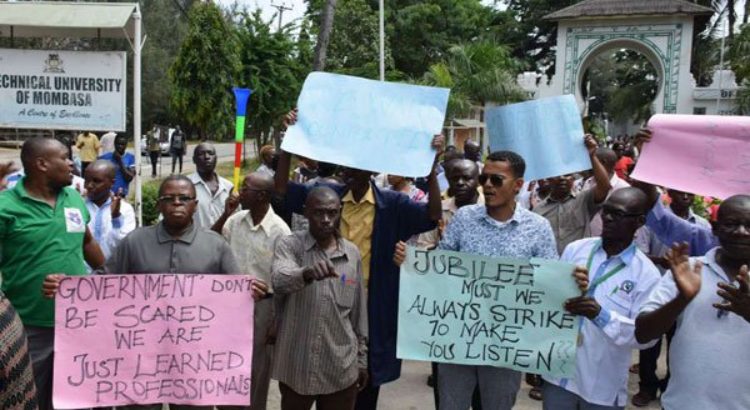
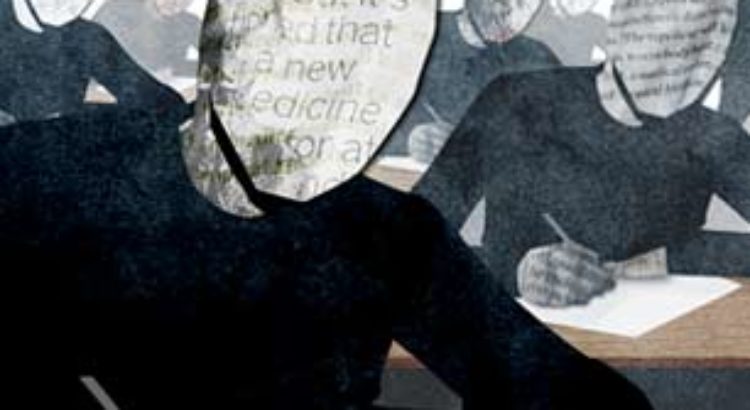
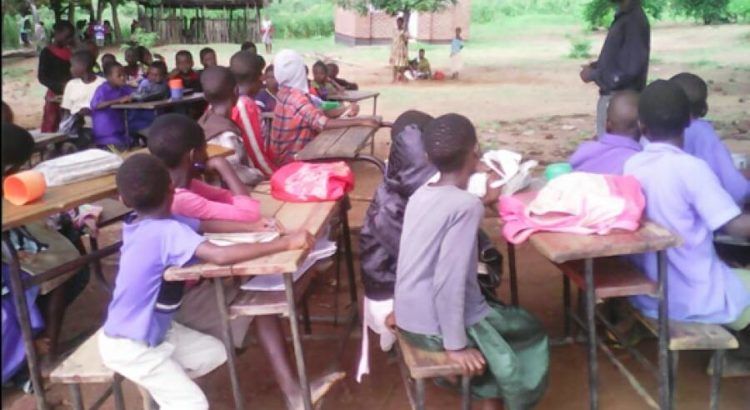







 Users Today : 21
Users Today : 21 Total Users : 35460908
Total Users : 35460908 Views Today : 54
Views Today : 54 Total views : 3420244
Total views : 3420244